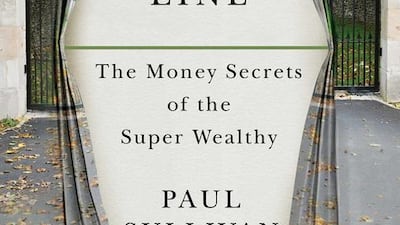In The Thin Green Line, New York Times journalist Paul Sullivan sets out to discover the money habits of America's super- wealthy – the One Per Cent of the population who either make more than US$345,000 per year in earnings or who have minimum savings of $10 million.
The idea for this work came in 2011, when economic recovery in the US was still weak.
It struck Sullivan that “the economy was changing” and that “the burden of security in life and retirement was going to fall squarely on each of us”.
The resulting book aims to “empower people to make [better] financial choices”.
In the course of his reporting, the author, who is himself now part of the One Per Cent club – although he comes from a less financially privileged background – very quickly learns that there is a difference between being “rich” and being “wealthy”.
Being wealthy is about having long-term financial security, factoring in risks and being able to survive potential negatives such as disability, a partners’ death or an economic downturn. Sullivan also discovers that the “thin green line”, to which the title of the book refers, cuts through every income level from “the teacher with her pension on the right side of the line” to “the high-earning but overleveraged financier on the wrong side”.
The book, published earlier this year, is divided into five parts: how we think about money; how we save, spend and give it away; and the science of testing how we think and talk about money under stress.
Sullivan submits his own financial choices to scrutiny and his honesty in discussing his own habits is perhaps one reason why the book is compelling. His writing has a light touch and the book succeeds in being both informative and engaging.
The writer has done his research and backs up his observations with facts.
He interviews a fantastic selection of people including world-class economists, behavioural psychologists, philanthropists, tech founders and the offspring of the rich and famous – including Randy Fertel, the son of the founder of Ruth’s Chris Steak House who says he’s pretty sure that money ruined his family.
q&a behaviour of the one per cent
Lianne Gutcher expands on what Paul Sullivan's The Thin Green Line offers its readers:
It seems you liked the book. Any drawbacks?
I did like the book – to the extent that it’s prompted me to think more carefully about my own financial decision-making. A downside is perhaps that the book is very “American” – there are interviews with obscure (to me) American sports stars and references to elite American prep schools. But this did not put me off.
If the book is very American, is it relevant to readers in the UAE?
Very much so. Many people are drawn to working in the UAE with the good intentions of bettering their own financial situation and saving for their future. Despite those good intentions, however, people at every income level may find themselves living beyond their means and “acting rich” by spending extravagantly on fancy cars, clothes and dinners. This book is a reminder why it’s important to be a little more frugal, to save and invest, and to spend in moderation.
What did you learn?
When it comes to investing, most of the One Per Cent have a financial adviser as well as an accountant and lawyer. As Sullivan writes: “Just because they successfully managed businesses that sold cars or vinyl siding or computer software didn’t mean they understood how to manage the money made from those decisions.” Also interesting is that members of the One Per Cent are not necessarily any better than the rest of us about making investment decisions. They are often, however, more able to admit the mistakes they make and cut their losses.
business@thenational.ae
Follow The National's Business section on Twitter

